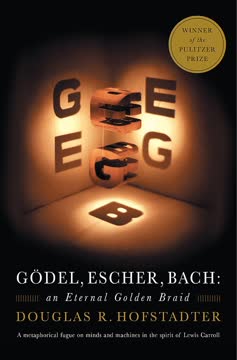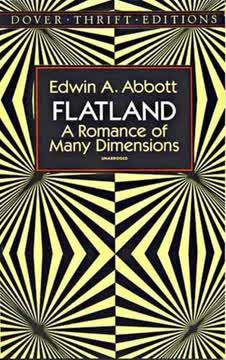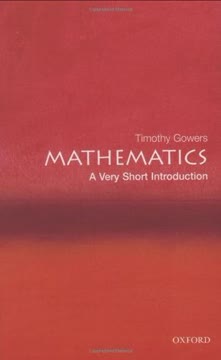Key Takeaways
1. Algebra began as solving specific problems, not abstract equations.
To a person of our time, that world seems inconceivably remote.
Ancient roots. The earliest forms of algebra, dating back nearly 4,000 years to Mesopotamia and Egypt, were embedded in practical word problems. These involved specific numbers and concrete scenarios, such as measuring land areas or calculating grain quantities. The focus was on finding unknown quantities through step-by-step procedures or algorithms.
Word problems. Babylonian tablets from the Hammurabi era show sophisticated techniques for solving problems equivalent to quadratic equations. These were expressed entirely in words, often using geometric language like "length" and "width" for unknown quantities. There was no general notation or abstract concept of an equation type, only specific numerical examples and solution methods.
Limited progress. Despite these early flashes of insight, mathematical progress in the ancient world was incredibly slow. For over a millennium and a half after the Hammurabi era, Babylonian and Egyptian mathematics showed almost no development in symbolism or abstraction. The focus remained on arithmetic procedures for specific problems rather than the general study of equations.
2. Diophantus introduced symbolic notation, a key step towards abstraction.
Diophantus certainly was not, as he has often been called, the father of algebra.
First symbols. Around the 3rd century CE in Alexandria, Diophantus made a significant leap by introducing the first known literal symbolism for algebraic problems. He used special symbols for the unknown quantity and its powers (square, cube), as well as for subtraction and equality. This allowed for a more concise representation of problems than the purely verbal methods of earlier eras.
Indeterminate equations. Diophantus's main work, Arithmetica, focused on solving indeterminate equations, which have more than one unknown and potentially infinite solutions. Despite having notation for only one unknown, he developed ingenious methods to find rational number solutions by expressing other unknowns in terms of the primary one. His insistence on rational solutions pointed towards future number theory.
Limited scope. While groundbreaking for its time, Diophantus's symbolism was still primitive compared to modern notation. He lacked symbols for multiple unknowns and did not fully embrace negative numbers as valid solutions, though he used them in intermediate calculations. His methods were often specific to problem types rather than universally applicable algorithms.
3. Medieval scholars preserved and advanced algebraic techniques.
The English word “algebra” is taken from the title of a book written in this Baghdad of the Abbasid dynasty around 820 CE by a man who rejoiced in the name Abu Ja’far Muhammad ibn Musa al-Khwarizmi.
Arabic origins. The term "algebra" derives from al-jabr, meaning "completion," one of the operations described by al-Khwarizmi in his influential 9th-century book, A Handbook of Calculation by Completion and Reduction. This book systematized the solution of linear and quadratic equations, classifying them into six basic types based on positive terms.
Word-based methods. Despite the title's origin, al-Khwarizmi and other medieval Islamic mathematicians largely reverted to verbal descriptions of problems and solutions, lacking the literal symbolism of Diophantus. Their contribution lay in preserving and transmitting ancient knowledge, particularly from Babylonian and possibly Indian sources, and in focusing on equations as objects of study in themselves.
Geometric solutions. Later Islamic mathematicians, like Omar Khayyam in the 11th century, continued to use geometric methods to solve algebraic problems. Khayyam made the first systematic assault on cubic equations, classifying them and providing geometric solutions for several types. This work, though lacking symbolic notation, pushed the boundaries of what was solvable.
4. The Renaissance saw the algebraic solution of cubic and quartic equations.
Artis magnae sive de regulis algebraicis liber unus—“Of the Great Art, or the First Book on the Rules of Algebra.”
Italian breakthroughs. The 16th century in Italy witnessed a dramatic advance with the discovery of general algebraic formulas for solving cubic and quartic equations. This was a period of intense competition among mathematicians, often involving public challenges and secrecy surrounding discoveries. Key figures included Scipione del Ferro, Nicolo Tartaglia, Girolamo Cardano, and Lodovico Ferrari.
Cardano's Ars Magna. Girolamo Cardano's 1545 book, Ars Magna, published the solutions to the cubic and quartic equations, crediting del Ferro and Tartaglia for the cubic and Ferrari for the quartic. This book was a landmark, presenting these complex formulas and marking a significant step beyond the quadratic equations solvable since antiquity.
Emergence of complex numbers. The solution of the cubic equation forced mathematicians to confront the square roots of negative numbers, which appeared even when the equation had only real solutions. Cardano hesitantly explored these "imaginary" numbers, and Rafael Bombelli later developed rules for their arithmetic in his 1572 book, l'Algebra, which also introduced Diophantus's work to Europe.
5. Modern literal symbolism revolutionized algebraic manipulation.
The introduction of a good workable literal symbolism was a great advance in mathematics.
Viète's innovation. François Viète, a French mathematician of the late 16th century, made a crucial contribution by systematically using letters to represent both known quantities (coefficients) and unknown quantities (variables). This marked the beginning of modern literal symbolism, allowing for the representation and manipulation of general algebraic expressions and equations.
Descartes' standardization. René Descartes, in his 1637 work La géométrie, refined Viète's notation, establishing the convention of using letters from the beginning of the alphabet (a, b, c) for knowns and letters from the end (x, y, z) for unknowns. His work also integrated algebra and geometry, showing how geometric figures could be represented and studied using algebraic equations (analytic geometry).
Relieving the imagination. This systematic symbolism transformed algebra from a collection of specific problem-solving techniques into a powerful tool for general manipulation and reasoning. As Leibniz later put it, it could "relieve the imagination," allowing mathematicians to work with abstract relationships between quantities without being tied to specific numbers or geometric interpretations.
6. The unsolvability of the quintic equation spurred new algebraic theories.
We now know that no such solution exists.
The next challenge. Following the solution of the cubic and quartic equations, the natural next target was the general quintic equation (degree 5). For centuries, mathematicians sought an algebraic formula involving only arithmetic operations and roots to express the solutions in terms of the coefficients.
Abel-Ruffini theorem. Despite numerous attempts, no such formula was found. In the early 19th century, Paolo Ruffini and later Niels Henrik Abel proved that the general quintic equation cannot be solved algebraically using only roots. This groundbreaking result, known as the Abel-Ruffini theorem, closed a long chapter in the history of algebra and shifted the focus from finding solutions to understanding why they couldn't be found.
Lagrange's insights. Joseph-Louis Lagrange's work in the late 18th century, which investigated the permutations of equation roots, laid the groundwork for understanding solvability. His "resolvent" method, which reduced the problem of solving an equation to solving a related equation of lower degree, worked for cubics and quartics but failed for the quintic, hinting at its fundamental difference.
7. New mathematical objects like vectors and matrices emerged from abstraction.
The humble vector space, though a simple thing in itself, unlocks a treasure cave of mathematical wonders.
Beyond numbers. As algebraic symbolism became more abstract, mathematicians began to see that the rules of arithmetic could apply to things other than numbers. This led to the discovery and definition of new mathematical objects, such as vectors and matrices, which could be added and multiplied according to specific rules.
Vector spaces. The concept of a vector space, formalized in the 19th century (though ideas were present earlier in Grassmann's work), describes collections of objects (vectors) that can be added together and multiplied by scalars (numbers). This abstract structure applies to diverse examples, from geometric arrows in space to polynomials or lists of numbers.
Matrices. Matrices, or "oblong arrangements of terms," initially arose from the study of determinants and systems of linear equations. Arthur Cayley formalized the concept of a matrix as an object in its own right in 1858, defining rules for matrix addition and multiplication. Matrix algebra provided a powerful tool for representing linear transformations and solving systems of equations.
8. Group theory provided a framework for understanding symmetry and solvability.
The idea of a group as applied to permutations or substitutions is due to Galois, and the introduction of it may be considered as marking an epoch in the progress of the theory of algebraic equations.
Galois's revolution. Évariste Galois, in his tragically short life, developed a profound theory linking the solvability of polynomial equations to the structure of certain groups of permutations of their roots. This theory, now known as Galois theory, provided a definitive answer to which equations could be solved algebraically.
Permutation groups. Galois's work built on Lagrange's ideas about permutations of roots. He showed that for each equation, there is an associated group (the Galois group) whose properties determine whether the equation's roots can be expressed using radicals. This was the first major application of group theory, which was initially conceived as the study of permutations.
Abstract groups. Arthur Cayley later formalized the abstract concept of a group in 1854, defining it axiomatically as a set with a binary operation satisfying closure, associativity, identity, and inverse properties. This abstract definition allowed mathematicians to recognize group structures in diverse areas, from number systems (like roots of unity) to geometric transformations and beyond.
9. Ring theory and ideals offered insights into number systems and factorization.
This kind of mathematical object, in which the first three pocket calculator rules work reliably, but the fourth doesn’t, is called a ring.
Generalizing integers. The set of integers, where addition, subtraction, and multiplication are always possible but division is not, served as a model for the abstract algebraic object called a ring. Polynomials also form a ring, sharing similar arithmetic properties with integers. Ring theory studies the structure of such systems.
Ideals and factorization. Richard Dedekind formalized the concept of an ideal within a ring in the late 19th century. Ideals are special subrings that capture properties related to divisibility and factorization. This concept was crucial for understanding why unique factorization, which holds for ordinary integers, can break down in other number systems, a problem encountered by Kummer in his work on Fermat's Last Theorem.
New number systems. Ring theory provided the framework for discovering and studying new kinds of number systems, such as the p-adic numbers introduced by Kurt Hensel. These systems, based on algebraic concepts like ideals and fields, revealed unexpected properties and connections between number theory, algebra, and analysis.
10. Algebraic geometry unified diverse mathematical concepts through abstraction.
Around 1870 the concept of a space of n dimensions became the general property of the advancing young generation [of mathematicians].
Geometry meets algebra. Algebraic geometry studies geometric objects, such as curves and surfaces, using algebraic techniques, primarily polynomial equations. Descartes' analytic geometry was an early form, but the field expanded dramatically in the 19th century with the introduction of projective geometry, higher dimensions, and complex numbers.
Invariants. A key concept in algebraic geometry is the study of invariants – properties of geometric figures that remain unchanged under certain transformations (like moving or rotating a conic section). These invariants can be expressed algebraically in terms of the coefficients of the defining polynomial equations, linking geometry to the algebraic theory of rings and polynomials.
Varieties. David Hilbert's Nullstellensatz theorem in the late 19th century connected algebraic ideals to geometric objects called varieties (sets of points where a collection of polynomials are all zero). This theorem, though rooted in algebra, became fundamental to algebraic geometry, showing a deep relationship between algebraic structures and geometric spaces.
11. Modern algebra became a study of abstract structures and their relationships.
However inconspicuously the life of these individuals runs its course, nonetheless the fruits of their endeavors are the most valuable contributions which one generation can make to its successors.
Axiomatic approach. Building on the work of Hilbert and Emmy Noether, the 20th century saw algebra fully embrace an abstract, axiomatic approach. Algebraic objects like groups, rings, and fields were defined purely by their properties and the rules governing their operations, independent of any specific examples like numbers or permutations.
Category theory. This drive for abstraction culminated in the development of category theory by Saunders Mac Lane and Samuel Eilenberg in the 1940s. Category theory provides a framework for studying the relationships between different types of algebraic structures (categories) and the mappings (morphisms and functors) between them, aiming for a universal language for algebra.
Unreasonable effectiveness. Despite its high level of abstraction, modern algebra has found profound applications in diverse scientific fields, particularly physics. Concepts like Lie groups, matrices, and manifolds, developed from pure intellectual curiosity, proved essential for describing relativity, quantum mechanics, and particle physics, illustrating the "unreasonable effectiveness of mathematics."
Last updated:
Review Summary
Unknown Quantity receives mostly positive reviews for its engaging history of algebra, from ancient times to modern developments. Readers appreciate Derbyshire's witty writing style and biographical anecdotes about mathematicians. However, some find the later chapters challenging, as they delve into complex algebraic concepts. The book is praised for balancing mathematical explanations with compelling narratives, though a few critics note issues with eurocentrism and political comments. Overall, it's recommended for those with some mathematical background who enjoy the history of mathematics.
Similar Books
Download PDF
Download EPUB
.epub digital book format is ideal for reading ebooks on phones, tablets, and e-readers.














